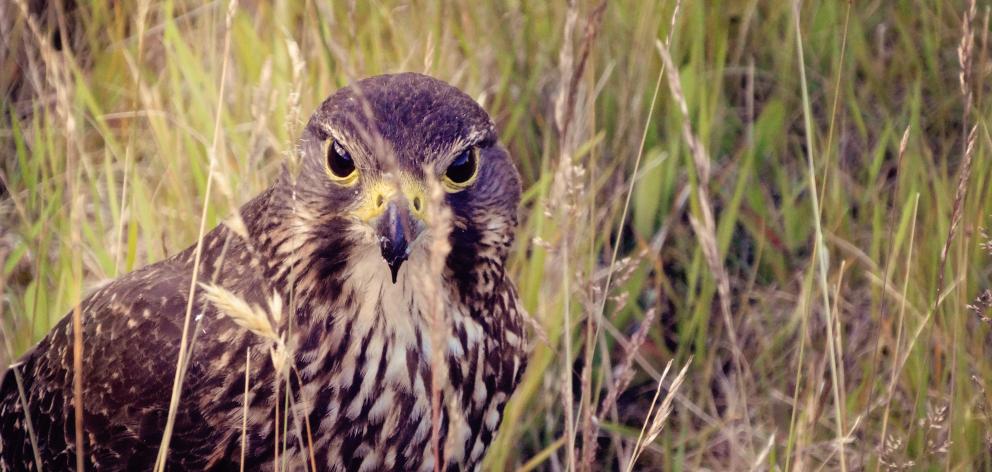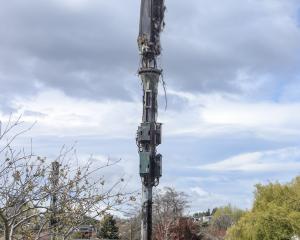
Two of Albert Town Camping Ground’s most recognisable guests have decided to return for another summer.
A pair of endangered karearea (New Zealand falcons) have returned to nest in a fallen log near the Hawea River swing bridge in the Albert Town reserve.
Last year, the pair successfully hatched two chicks and they were probably trying for a repeat, falcon advocate Mary Chaffey said.
Signs asking people to stay out of the nesting area had been erected in the past two weeks and a smaller area around the logs had been fenced off.

It was not unusual for the birds to come back to the same area but for them to return to the same log was quite special, she said. A group of tall pine trees close to the log provided the birds with the perfect look-out spot and could be the reason they decided to return, she said. Anyone who got too close to the nest could expect to be swooped.
The birds can fly at up to 100kmh.
"They will give a warning first but can get quite aggressive if they have already been bothered by something like a dog or a group of cyclists."
There were a few instances of people being injured by the birds last year, so it paid to be cautious, Ms Chaffey said.
While the birds could be dangerous, it was humans who were their main threat and anyone caught getting too close to the birds or disturbing or injuring them could be fined, she said.
Ideally, a hut would be constructed so people could view the birds and their chicks without putting themselves or the birds in danger, she said.
There were no studies on the number of karearea in the Upper Clutha but anecdotally it seemed the area was more habitable for the birds than many other parts of New Zealand, Ms Chaffey said.
People who kept chickens near the recreation reserve should take precautions as they were easy targets for the birds, she said.
Last year, people were told to wear helmets to protect themselves if they got close to the nesting area, but helmets could actually harm the birds, Ms Chaffey said.
"What we have now been told is if you are getting close to their territory, wear a soft hat with a drawstring so they don’t damage their talons if they do make contact."














